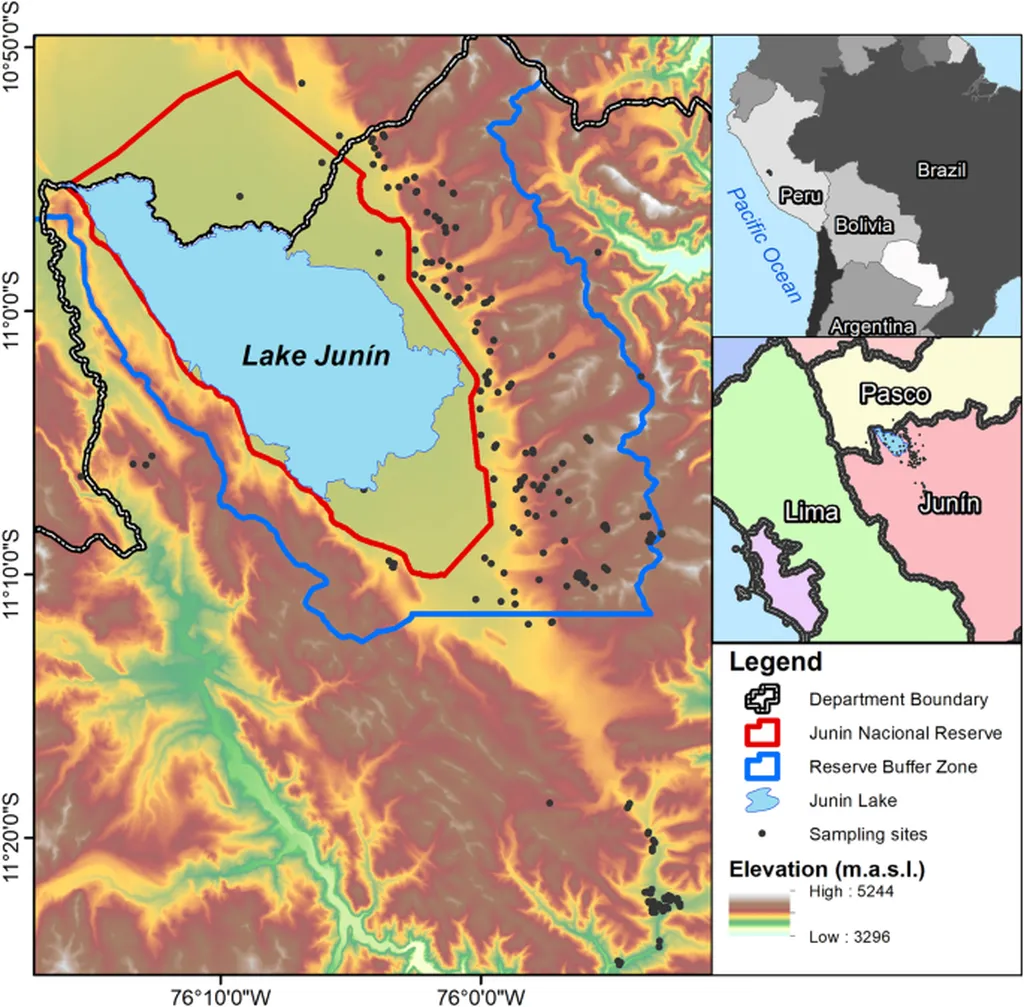In the rugged and diverse landscapes of the Peruvian Andes, farmers and researchers face a formidable challenge: understanding the soil’s chemical properties to optimize agricultural practices. A recent study published in *Frontiers in Soil Science* (which translates to *Frontiers in Soil Science* in English) has taken a significant step forward in this endeavor, leveraging the power of ensemble machine learning to map soil pH and electrical conductivity (EC) with unprecedented accuracy. This research, led by Carlos Carbajal-Llosa of the Dirección de Servicios Estratégicos Agrarios at the Instituto Nacional de Innovación Agraria (INIA) in Lima, Peru, promises to revolutionize soil management and has substantial implications for the energy sector.
The study focuses on two critical soil properties: pH and electrical conductivity. These properties influence nutrient availability and microbial activity, directly impacting agricultural productivity. However, the complex terrain and varied climates of the Andean region have made it difficult to gather comprehensive data. Carbajal-Llosa and his team addressed this challenge by developing an ensemble learning method that integrates multiple machine learning algorithms, including Support Vector Machine (SVM), Artificial Neural Network (ANN), Random Forest (RF), and Extreme Gradient Boosting (XGBoost).
“Our approach combines the strengths of different machine learning models to create a more robust and accurate prediction system,” explains Carbajal-Llosa. “By using weighted averaging based on each model’s predictive accuracy, we were able to significantly improve the reliability of our soil maps.”
The results are impressive. The weighted ensemble models achieved an R² value greater than 0.93, indicating a very high level of predictive accuracy. This approach reduced the Root Mean Square Error (RMSE) by approximately 72%, making it a powerful tool for soil mapping. Among the individual models, Random Forest and XGBoost performed best for pH predictions, while Support Vector Machine excelled in predicting electrical conductivity. Artificial Neural Networks, however, were the least effective.
The spatial patterns revealed by the study are noteworthy. Soil pH displayed greater spatial clustering than electrical conductivity, suggesting that pH is more predictable across different areas. Elevation emerged as the most important predictor in the machine learning models for both parameters, highlighting the influence of topography on soil properties.
The commercial implications of this research are substantial, particularly for the energy sector. Accurate soil mapping is crucial for the development of bioenergy crops, which require specific soil conditions to thrive. By identifying areas with optimal soil properties, energy companies can make informed decisions about where to invest in bioenergy projects, potentially increasing crop yields and reducing production costs.
Moreover, the study’s findings can guide soil management practices, helping farmers and land managers make data-driven decisions. “High-confidence pH maps are reliable for soil management decisions,” notes Carbajal-Llosa. “While EC predictions are more uncertain, they effectively identify priority areas for future sampling and investigation.”
The research also underscores the importance of ensemble learning in improving predictive accuracy. By combining multiple models, researchers can mitigate the weaknesses of individual algorithms and create more reliable predictions. This approach has the potential to be applied to other areas of environmental science, from climate modeling to water resource management.
As the world grapples with the challenges of climate change and food security, accurate soil mapping becomes increasingly vital. The work of Carbajal-Llosa and his team represents a significant advancement in this field, offering a powerful tool for researchers, farmers, and energy companies alike. By harnessing the power of machine learning, we can unlock the secrets of the soil and pave the way for a more sustainable future.
The study, titled “Ensemble machine learning for digital mapping of soil pH and electrical conductivity in the Andean agroecosystem of Peru,” was published in *Frontiers in Soil Science*, providing a valuable resource for professionals in the construction, agricultural, and energy sectors. As we look to the future, the integration of machine learning and soil science holds immense promise, shaping the way we understand and interact with the natural world.

